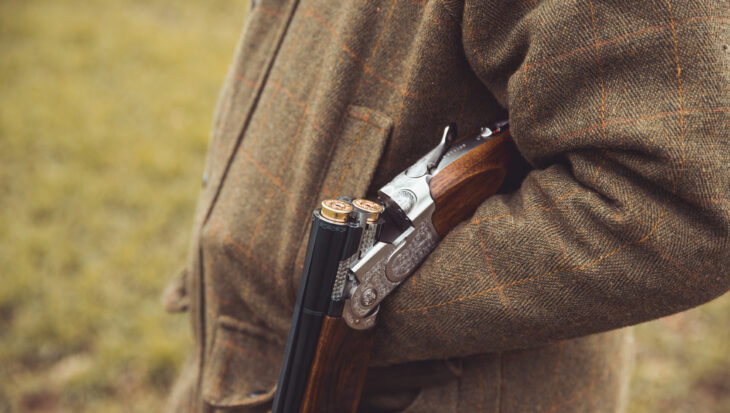Ban on the use of lead shot – finally!
Posted 10 Jul 2025

Posted on the 1st June 2003
Andrew Tyler reveals the dark side of horse racing... and describes how our campaign has exposed it.
The Grand National maintained its grim record when the 2003 race – run on April 5 – produced another equine fatality. Goguenard suffered a horrifying death when he fell several feet from a fence onto his back and a jockey then fell heavily onto his stomach. Among his injuries was a broken leg; he was shot.
Youlneverwalkalone also broke a leg but because of his high-profile status he received treatment, as did Iris Bleu, whose injuries included a blood clot and damaged leg. Just 14 of the 40 starters finished.
Twenty-nine horses have now died since 1997 during the three-day Grand National event – eight of them in the National itself. Two perished in last year’s race. The meeting’s other 2003 victim was Coolnagorna, a six-year-old who was destroyed after falling and breaking a hind leg during a race on the first day.
The carnage that is an integral part of the Aintree meet does not go unnoticed by the public. Despite the event enjoying massive favourable publicity, promotional tie-ins with national newspapers and a virtual news blackout on horse fatalities, 41% of the public believe the race is cruel to horses. A further 9% of respondents to an Animal Aid-commissioned NOP opinion poll were in the ‘don’t know’ camp. Among women, there was a clear majority who regarded the Aintree event as cruel.
Our publication of the poll results just two days before the running of the National attracted substantial publicity, including articles in dozens of newspapers throughout the country and interviews with an even greater number of local radio stations.
A week earlier, we published a major report exposing the dark side of the racing industry itself, which generated even greater media coverage. Called Riding For A Fall: the genetic time bomb at the heart of racing, it revealed that modern race horses are subjected to such extreme patterns of in-breeding, training and competition that they are suffering more broken bones, viral disease and devastating conditions such as bleeding lungs (present in 82% of three year olds racing on the flat) and gastric ulcers (in 93% of all horses in training). While three times as many foals are produced every year than 45 years ago, only one third are now rated sufficiently healthy and robust to make the grade. The rest are disposed of.
Based on the industry’s own data, scientific reports and articles by top racing pundits, our investigation also revealed that breeding females are subjected to a punishing regime of artificial treatments to control and speed up reproduction. And pressure is building for the introduction of technologies currently prohibited by racing’s authorities. These include artificial insemination, embryo transfer and cloning. The burden on breeding stallions is such that two of the three most coveted males died in 2001 from suspected exhaustion.
Riding For A Fall points out that today’s horse racing industry has much in common with livestock production. Both are committed to profit-driven mass output of progeny and the acceptance of a high ‘wastage’ rate. In both industries there is an excessively heavy burden on breeding ‘stock’ and high levels of endemic disease and musculoskeletal injury. The key difference is that the fate of sheep, cattle, pigs and chickens is to be mass produced, killed and eaten. Racehorses are required also to serve as high-performance athletes.
Even in the midst of the first flush of war reporting, our report prompted a page-lead article in The Guardian, which summarised our key findings. On the day of the Grand National, the Daily Mail ran a devastating two-page critique of the racing industry and the Aintree event, which it headlined ‘National Disgrace?’ This again arose directly from the publication of our report.
Then there were the dozens of local radio interviews, and the publication of articles and letters in newspapers around the country. Riding for A Falladditionally generated news reports and feature articles in leading British, American and Australian racing journals. A lengthy piece by Scotland on Sunday’s racing correspondent summed up the muddle and anger felt within racing circles over our factually-based revelations. After accusing Animal Aid of twisting facts and promoting ‘misinformation’, the author went on to write:
‘Having said all that, Animal Aid do have a point… There is absolutely no doubt that the thoroughbred racehorse species as a whole are (sic) less robust and more unhealthy than they were 20 years ago. There are too many injuries, too many fractures, too many fatalities.’
Rather than confront the endemic problems that lead to thousands of horses every year failing to make the grade and hundreds more dying from race-related injuries and disease, the industry is looking for ‘answers’ by commissioning grotesque laboratory experiments on live horses. Many were carried out by the Newmarket-based veterinary charity, the Animal Health Trust. Recently published examples exposed in Riding For A Fall include animals being made to walk for months on treadmills and then killed for analysis, and pregnant mares subjected to deliberate wounding or infection with viruses that cause paralysis and abortion. There have also been surrogate birth experiments where embryos were switched between ponies and thoroughbreds. Some of the offspring were born with muscle wastage and freakishly long, deformed legs.
Posted 10 Jul 2025

Temperatures are rising and it’s time to get outdoors, enjoy the weather and tuck into some delicious vegan food! Thanks to an abundance of plant-based options now available, there’s an alfresco option for every tastebud...
Posted 09 Jul 2025
